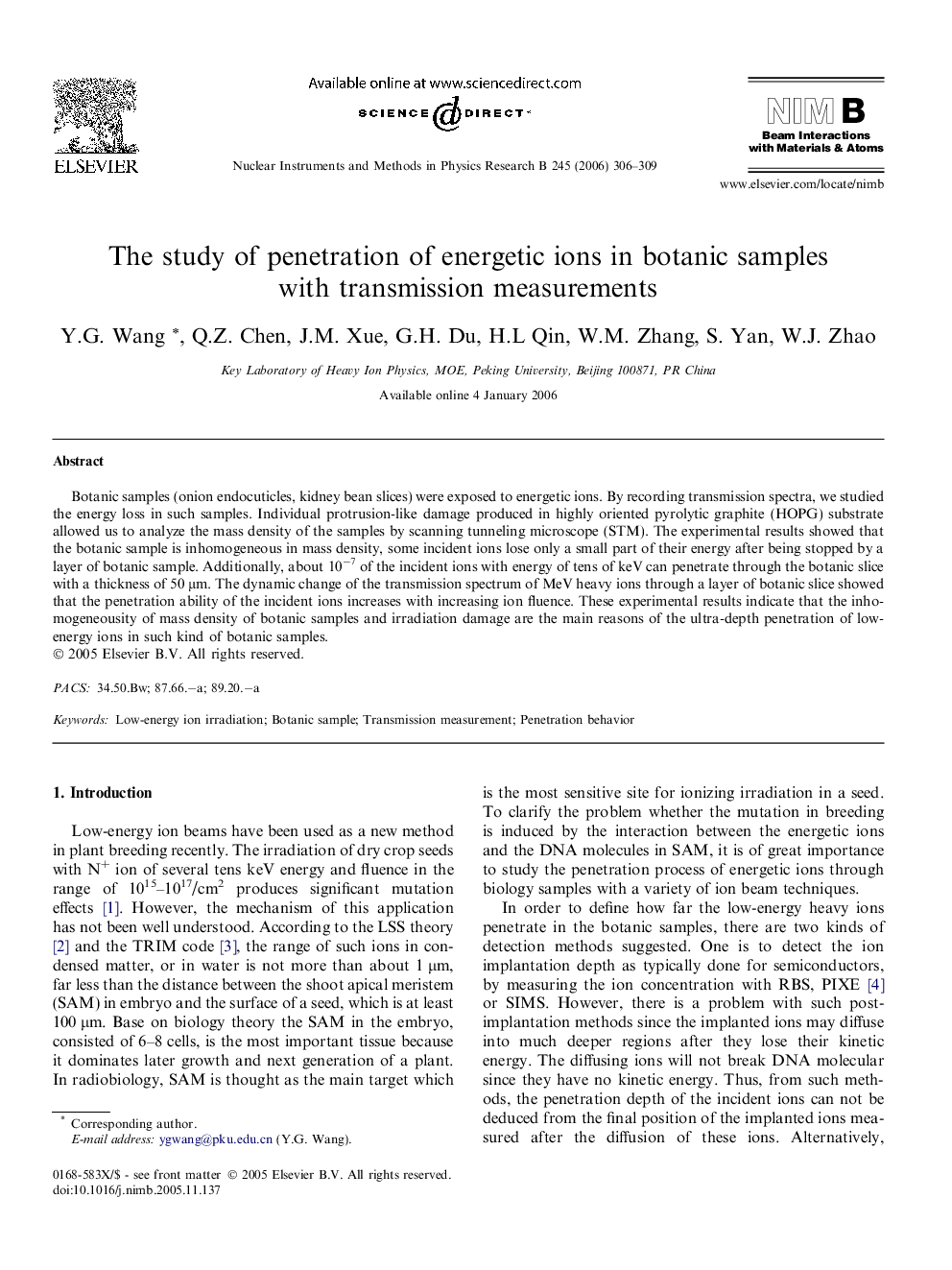| Article ID | Journal | Published Year | Pages | File Type |
|---|---|---|---|---|
| 1687198 | Nuclear Instruments and Methods in Physics Research Section B: Beam Interactions with Materials and Atoms | 2006 | 4 Pages |
Abstract
Botanic samples (onion endocuticles, kidney bean slices) were exposed to energetic ions. By recording transmission spectra, we studied the energy loss in such samples. Individual protrusion-like damage produced in highly oriented pyrolytic graphite (HOPG) substrate allowed us to analyze the mass density of the samples by scanning tunneling microscope (STM). The experimental results showed that the botanic sample is inhomogeneous in mass density, some incident ions lose only a small part of their energy after being stopped by a layer of botanic sample. Additionally, about 10â7 of the incident ions with energy of tens of keV can penetrate through the botanic slice with a thickness of 50 μm. The dynamic change of the transmission spectrum of MeV heavy ions through a layer of botanic slice showed that the penetration ability of the incident ions increases with increasing ion fluence. These experimental results indicate that the inhomogeneousity of mass density of botanic samples and irradiation damage are the main reasons of the ultra-depth penetration of low-energy ions in such kind of botanic samples.
Related Topics
Physical Sciences and Engineering
Materials Science
Surfaces, Coatings and Films
Authors
Y.G. Wang, Q.Z. Chen, J.M. Xue, G.H. Du, H.L Qin, W.M. Zhang, S. Yan, W.J. Zhao,
